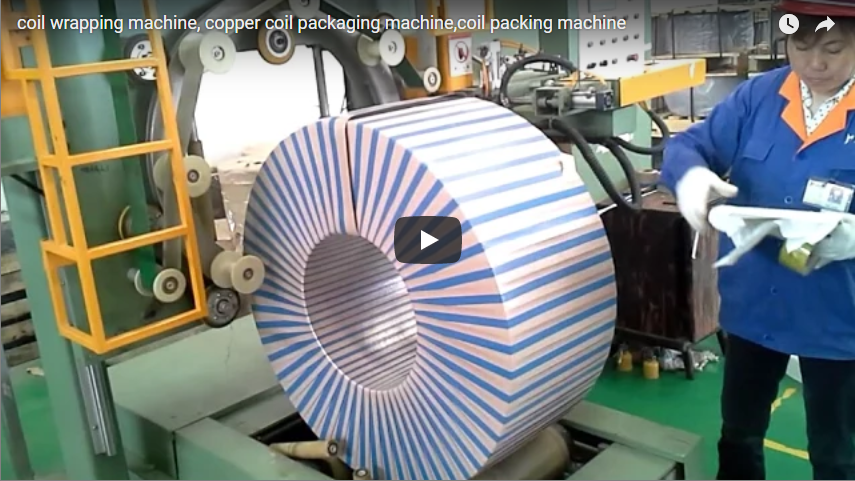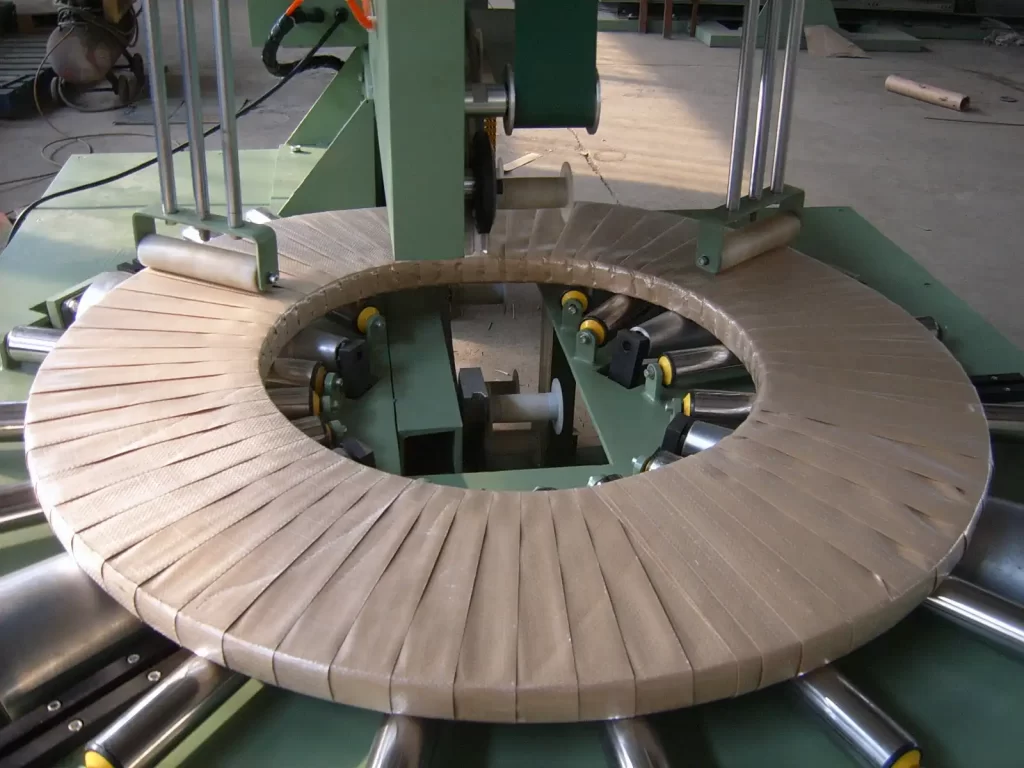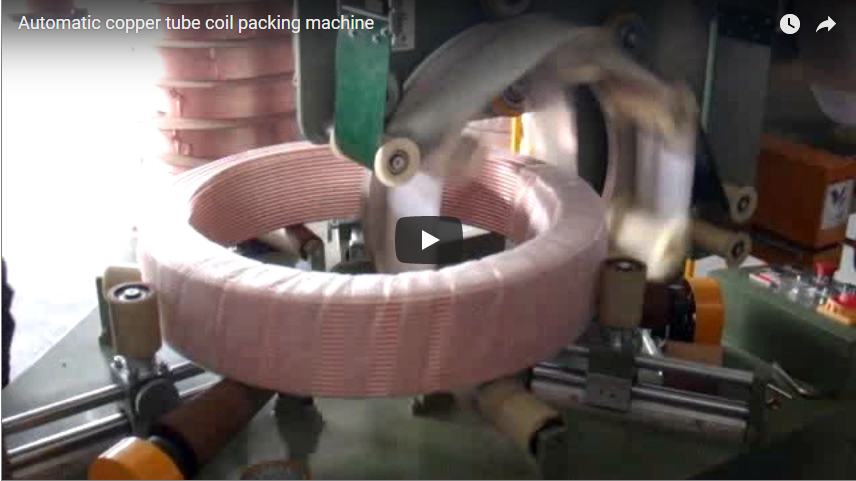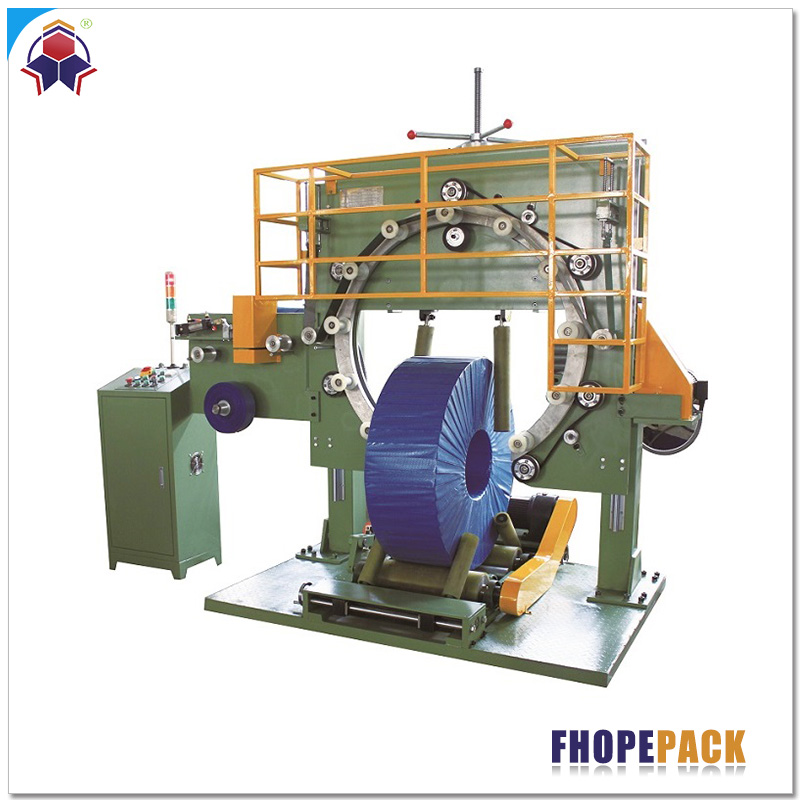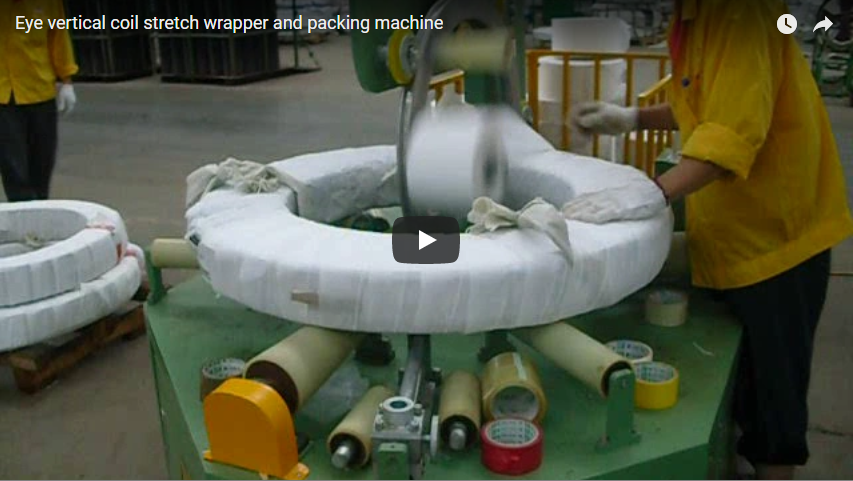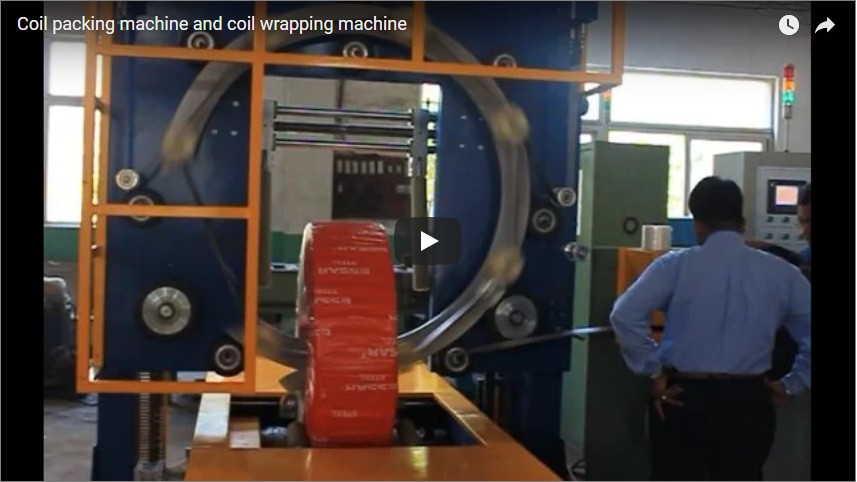Optimizing Copper Strip Packaging: A Technical Deep Dive into Automated Coil Wrapping Machines
Copper strips, essential components in electrical, electronic, and industrial applications, demand careful handling and packaging to prevent surface damage, oxidation, and deformation. Traditional manual packaging methods often fall short in providing consistent protection and efficiency. This article delves into the technical specifications, design considerations, and operational benefits of automated copper strip packing machines, specifically focusing on horizontal coil wrapping technology, as demonstrated in the video above. These machines offer a robust solution for safeguarding valuable copper coils throughout storage and transit, aligning with the high standards expected in modern manufacturing environments.
1. The Imperative for Automated Coil Packaging
Handling copper strips presents unique challenges due to the material's susceptibility to scratching, tarnishing, and bending. Automated packing machines address these issues directly:
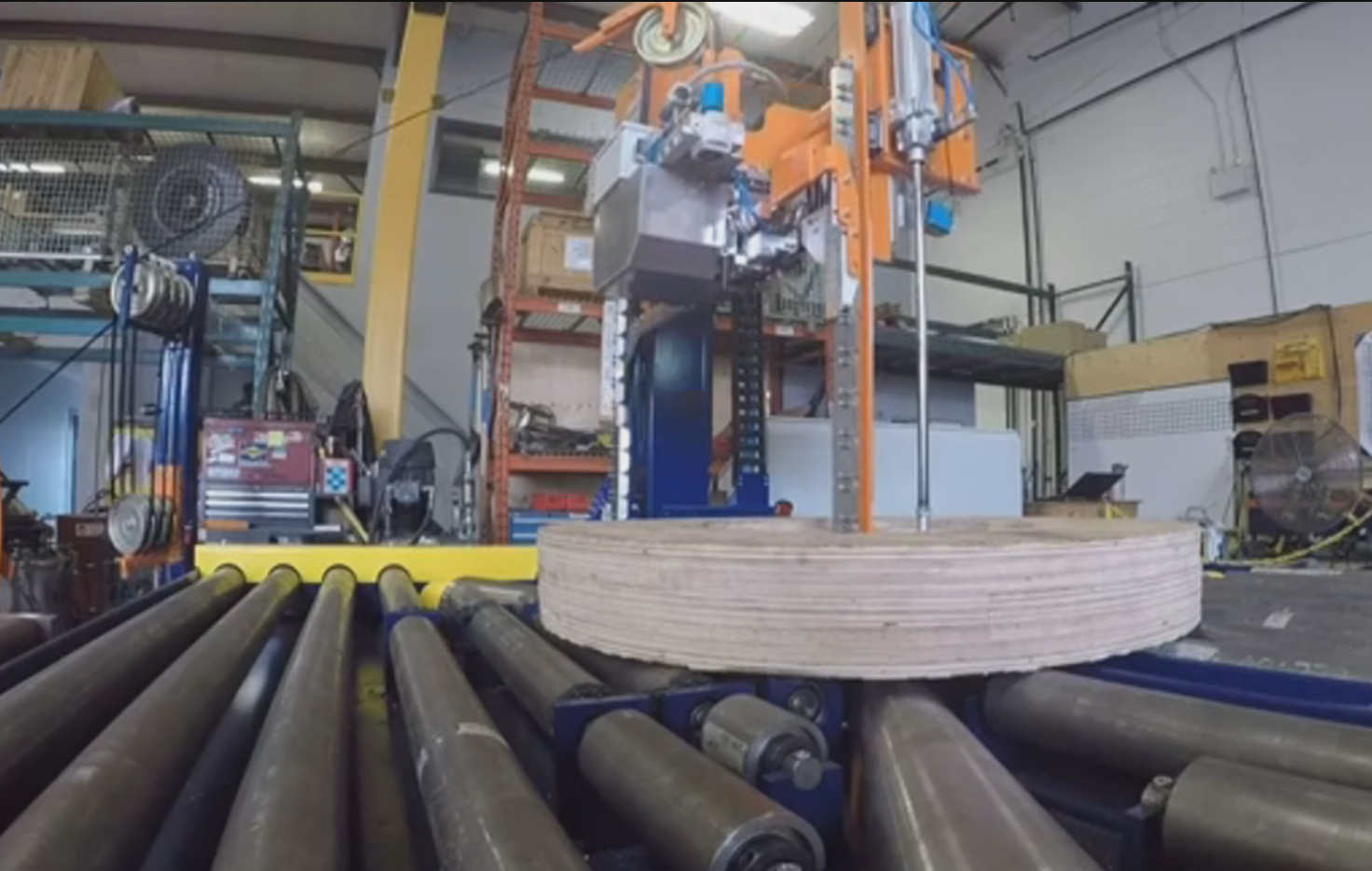
- Enhanced Protection: Consistent, tightly applied wrapping materials (like stretch film or VCI paper) create a barrier against moisture, dust, and physical impact, significantly reducing the risk of corrosion and surface damage.
- Increased Efficiency: Automation dramatically speeds up the packaging process compared to manual methods, reducing bottlenecks and increasing overall throughput.
- Reduced Labor Costs: Automating the wrapping process minimizes the need for manual labor, freeing up personnel for higher-value tasks and reducing operational expenses.
- Consistency and Quality: Machines ensure uniform wrapping tension and material overlap, leading to standardized, secure packages every time.
2. Core Technology: Horizontal Coil Wrapping Explained
The machine showcased typically employs a horizontal eye-through wrapping mechanism. The core principle involves:
- Coil Loading: The copper strip coil is placed onto a conveyor system, often equipped with protective rollers (e.g., PU-coated) to prevent metal-to-metal contact.
- Wrapping Ring: A rotating ring holds the packing material dispenser (shuttle). As the coil moves through the ring's "eye," the ring rotates, dispensing and applying the wrapping material (e.g., stretch film) around the coil's circumference and through its center bore.
- Material Application: The shuttle precisely applies the film with controlled tension and overlap, ensuring complete coverage. Advanced systems may feature pre-stretch capabilities to optimize film usage.
- Cutting and Sealing: Upon completion of the wrapping cycle, the material is automatically cut and secured (e.g., via heat sealing or wiping).
- Coil Unloading: The securely wrapped coil is then transported via an output conveyor for further handling or storage.
3. Key Components and Design Features
A typical automated copper strip packing machine comprises several critical subsystems:
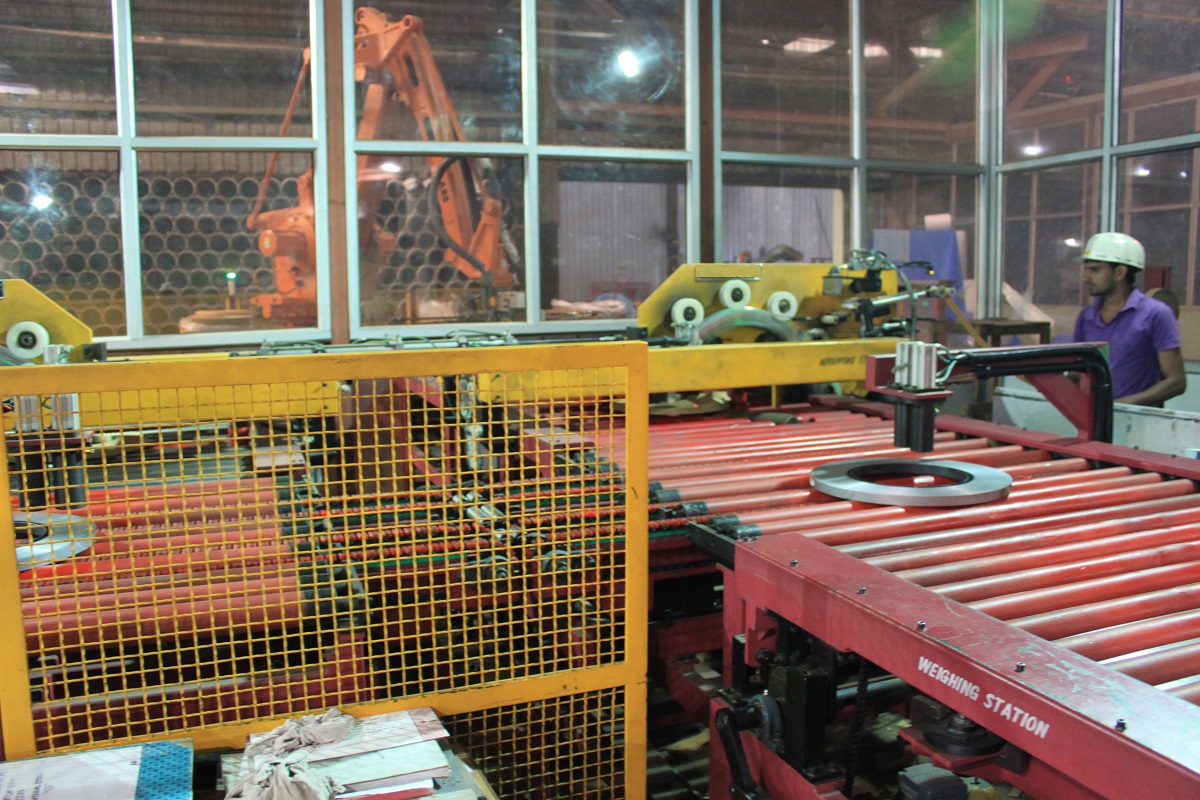
- Infeed/Outfeed Conveyors: Often powered roller conveyors designed for smooth coil transport. Options include V-shaped rollers or flat beds with side guides, sometimes integrated with tilting or lifting mechanisms for ergonomic loading/unloading. Protective coatings on rollers are essential.
- Main Wrapping Station:
- Rotating Ring: The central element, engineered for smooth, high-speed rotation. Durability and balance are key design factors.
- Film Shuttle/Dispenser: Holds the roll of packing material. Features often include adjustable tension control and pre-stretch mechanisms (stretching the film before application to increase yield and load stability).
- Drive System: Typically utilizes robust motors and gearboxes with friction wheel or belt drives for reliable ring rotation and conveyor movement.
- Control System:
- PLC (Programmable Logic Controller): The machine's brain, managing all operational sequences, speeds, and timings.
- HMI (Human-Machine Interface): Usually a touchscreen panel allowing operators to select wrapping programs, adjust parameters (e.g., overlap percentage, number of wraps), monitor status, and perform diagnostics.
- Packing Material Clamping & Cutting Unit: Automated system to clamp the leading edge of the film at the start and cleanly cut/secure it at the end of the cycle.
- Safety Features: Interlocked guarding, emergency stop buttons, light curtains, and warning indicators are standard to ensure operator safety.
4. Technical Specifications Overview
While specifications vary based on model and customization, typical parameters for a copper strip coil wrapper include:
| Parameter | Typical Range / Specification | Notes |
|---|---|---|
| Coil Outer Diameter (OD) | 500 mm - 1500 mm (or custom) | Defines the maximum coil size capability. |
| Coil Inner Diameter (ID) | 300 mm - 800 mm (or custom) | Critical for ring clearance. |
| Coil Width | 50 mm - 500 mm (or custom) | Impacts wrapping cycle time and coverage. |
| Coil Weight Capacity | 100 kg - 3000 kg (or custom) | Dictates conveyor and frame structural needs. |
| Wrapping Ring Speed | 40 - 90 RPM (adjustable) | Directly influences packaging throughput. |
| Packing Material | LLDPE Stretch Film, VCI Film, Paper | Machine configured for specific materials. |
| Film Width | 76mm / 100 mm / 150mm | Dependent on dispenser design. |
| Overlap Control | 10% - 90% (adjustable via HMI) | Ensures complete surface coverage. |
| Control System | Siemens / Allen-Bradley PLC & HMI | Common industry standards. |
| Power Requirements | 380V/50Hz/3Ph (or regional standard) | |
| Conveyor Speed | 5 - 15 m/min (adjustable) | Synchronized with wrapping process. |
(Note: These are representative values. Always refer to specific manufacturer data for accurate specifications.)
5. Material Handling and Integration
Effective integration into the production line is crucial. These machines often feature:
- Powered Conveyors: As mentioned, these facilitate automated loading and unloading, minimizing manual handling. They can be integrated with upstream processes (like slitters) and downstream systems (palletizers, strapping machines).
- Indexing Systems: Precisely position the coil within the wrapping station.
- Custom Layouts: Configurations like straight-through or L-shaped layouts can be designed to fit specific factory floor plans.
6. Packing Materials: Beyond Stretch Film
While stretch film is common for physical containment, copper often requires additional protection:
- VCI (Volatile Corrosion Inhibitor) Film/Paper: Releases harmless chemicals that form a protective molecular layer on the metal surface, preventing oxidation and tarnishing, especially crucial for long-term storage or sea freight. Machines can be adapted to apply VCI materials as an inner layer before stretch wrapping.
- Crepe Paper / Other Protective Layers: Can be applied for additional cushioning or specific barrier properties.
7. User Experience and Operational Insights
From an operator's perspective, modern machines prioritize ease of use:
- Intuitive HMI: Touchscreen interfaces simplify program selection, parameter adjustments (like coil dimensions, desired overlap), and troubleshooting.
- Quick Material Changes: Design considerations often include easy access for changing film or paper rolls.
- Low Maintenance: Use of high-quality components and accessible design minimizes downtime for routine maintenance.
- Programmable Recipes: Storing parameters for different coil sizes/types allows for quick changeovers.
8. Conclusion: Investing in Protection and Efficiency
Automated copper strip packing machines represent a significant upgrade over manual methods. By leveraging technologies like horizontal eye-through wrapping, PLC controls, and robust material handling systems, manufacturers can ensure their valuable copper products are consistently protected against physical damage and environmental factors like corrosion. The enhanced efficiency, reduced labor dependency, and improved package quality translate directly to bottom-line benefits and greater customer satisfaction. When selecting a machine, careful consideration of coil dimensions, required throughput, packing material needs, and integration capabilities is essential.
For more detailed information on specific machine configurations and options, please visit the manufacturer's website: FHOPEPACK

